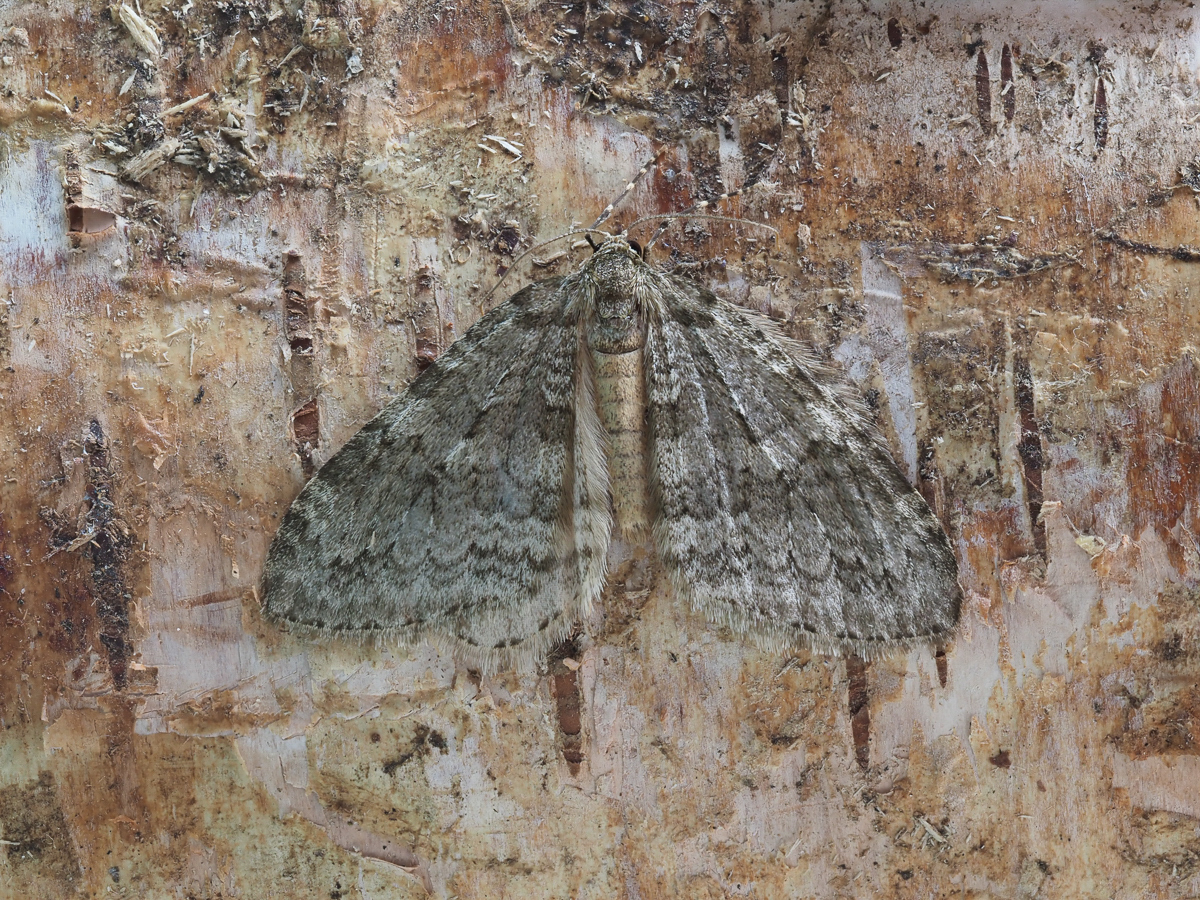
Photo © Andy Mitchell
The November moth (Epirrita dilutata) is a moth of the family Geometridae. The species was first described by Michael Denis and Ignaz Schiffermüller in 1775. It can be found in the Palearctic realm in western Europe from central Scandinavia to the Mediterranean the Caucasus and western Russia.
The wingspan is 38–44 mm, the forewings being variably marked with alternating pale and dark bands. The forewing ground colour is pale with darker grey and tinted brown. It has wavy lines. The hindwing is white grey with two lines. The distal fascia points in to the discal spot. Melanism is common and in some locations all-dark individuals make up the majority of the population. The species is extremely similar to three of its relatives, the pale November moth , the autumnal moth and the small autumnal moth and they cannot usually be separated without examination of the genitalia. See Townsend et al.
The November moth flies at night from September to November and is attracted to light and sometimes to nectar-rich flowers.
The caterpillar is green with red markings and feeds on a wide range of trees and shrubs. The species overwinters as an egg.
Source: Wikipedia
The primary larval foodplants are Apple (Malus domestica), Ash (Fraxinus excelsior), Aspen (Populus tremula), birches (Betula spp.), Blackthorn (Prunus spinosa), cherries (Prunus spp.), Crab Apple (Malus sylvestris), Dog-rose (Rosa canina), elms (Ulmus spp.), Hawthorn (Crataegus monogyna), Hazel (Corylus avellana), Hornbeam (Carpinus betulus), oaks (Quercus spp.), Rhododendron (Rhododendron ponticum) and willows (Salix spp.).